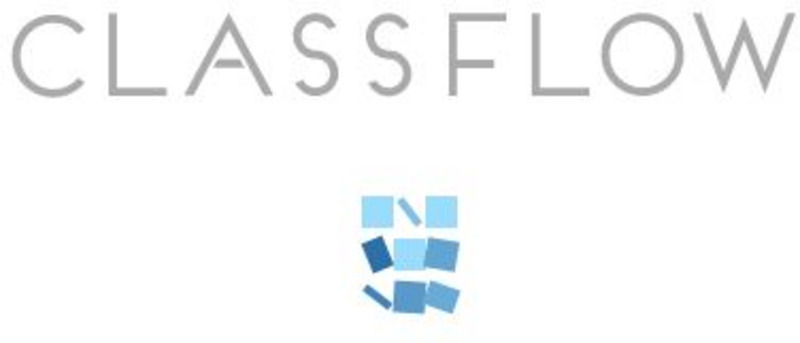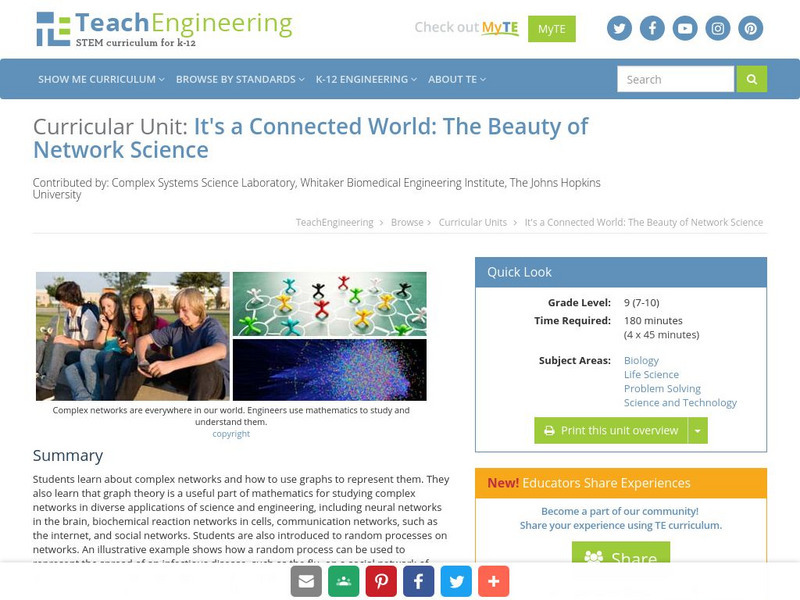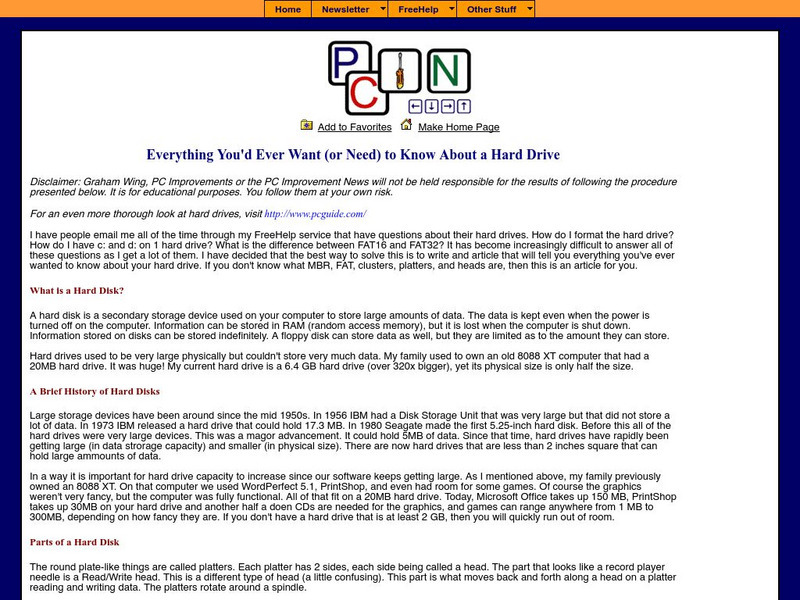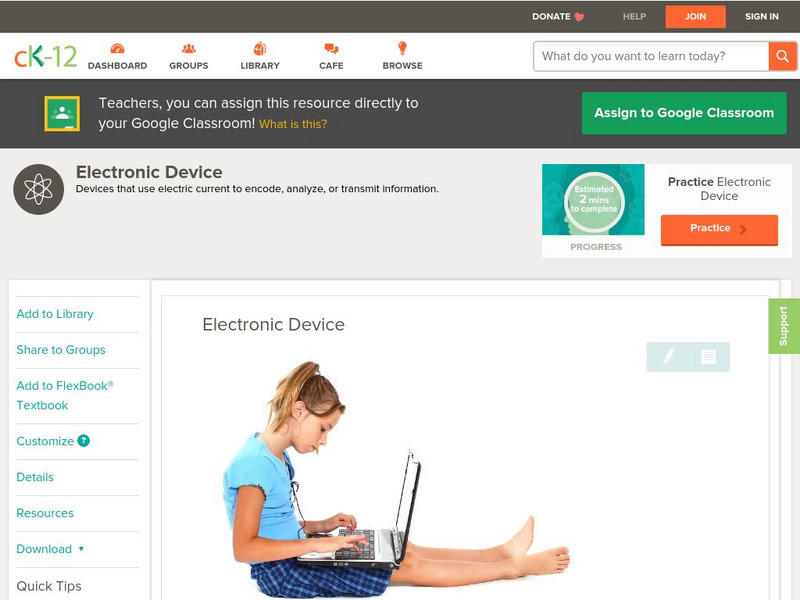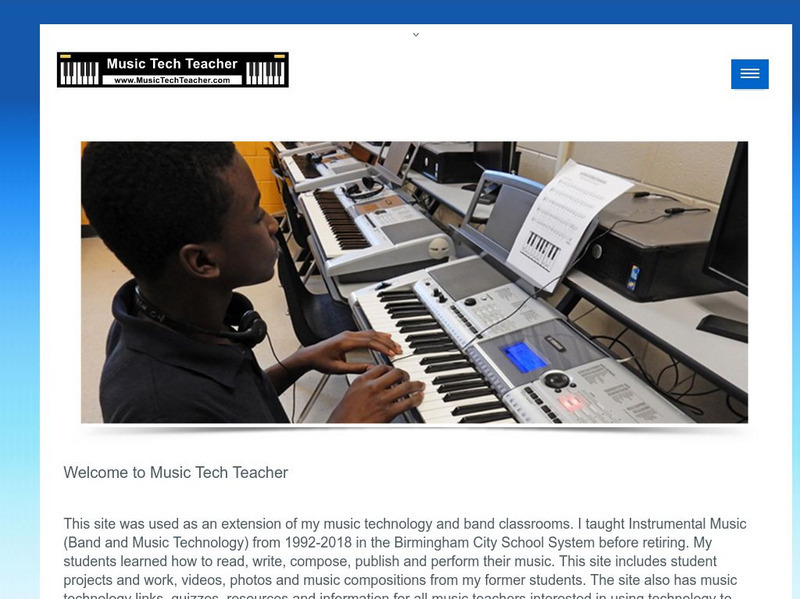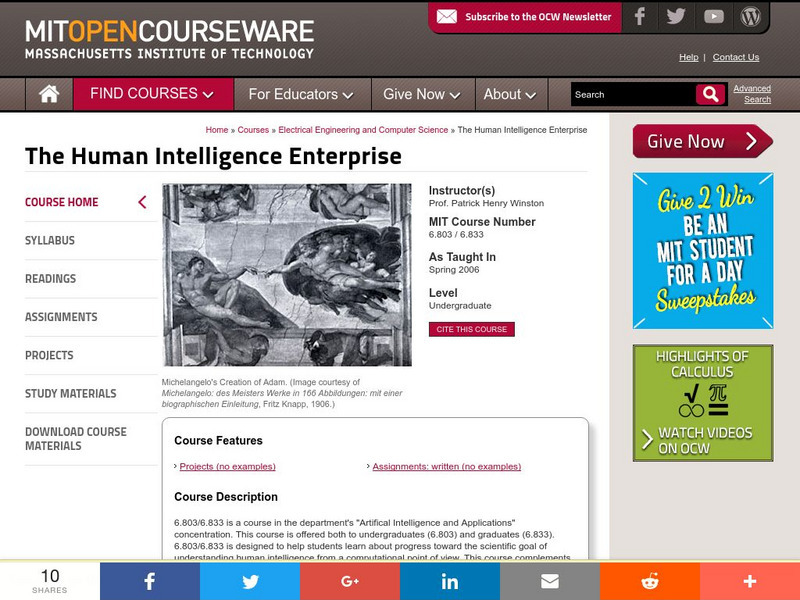Hi, what do you want to do?
Goodwill
Gcf Global: Computer Basics: Basic Parts of a Computer
Learn about the basic parts of a desktop computer.
Khan Academy
Khan Academy: What Are the Parts of a Computer?
Each computer receives input from a variety of devices, processes that data with the CPU and memory, and sends results to some form of output. This diagram visualizes that flow.
Goodwill
Gcf Global: Computer Basics: Inside a Computer
Master some of the basic terminology and understand what goes on inside a computer.
ClassFlow
Class Flow: Parts of the Computer
[Free Registration/Login Required] This flipchart provides an introduction to computers at the elementary grade level.
Other
Beanz: How to Build a Computer
Building your own computer is a great way to not only save money, and get more processing power, but also to learn about the less obvious parts of software programming.
TeachEngineering
Teach Engineering: Graphing the Spread of Disease
Students simulate disease transmission by collecting data based on their proximity to other students. One option for measuring proximity is by having Bluetooth devices "discover" each other. After data is collected, students apply graph...
Khan Academy
Khan Academy: Input & Output Devices
Become familiar with the parts of the computer that we interact with daily: the input and output devices.
Alabama Learning Exchange
Alex: Label It!
During this lesson, students will work to create word cards or "labels" to identify parts of the computer. Students will use basic letter sounds to help spell the correct words. Students will demonstrate their new knowledge by labeling...
ClassFlow
Class Flow: Computer
[Free Registration/Login Required] This flipchart helps students identify the parts of a computer in order to understand basic terms and terminology used in technology integration.
TeachEngineering
Teach Engineering: It's a Connected World: The Beauty of Network Science
Students learn about complex networks and how to use graphs to represent them. They also learn that graph theory is a useful part of mathematics for studying complex networks in diverse applications of science and engineering, including...
University of Cambridge
University of Cambridge: Nrich: Game Chocolate Bars
Use this game to practice finding how many of the chocolate bars (or parts) you will get when you share them with your friends at the party. If you don't figure it out correctly the computer will tell why.
Computer Hope
Computer Hope: Computer Dictionary
The dictionary is part of a site that offers free online help to computer users. The index provides a complete listing of terms by first letter. For terms that begin with a number, select the # sign.
Other
Pcin: All About Hard Drives
An article on the topic of hard drives. Includes what a hard disk is, brief history, parts of a hard disk with illustration, speed, and size.
Massachusetts Institute of Technology
Mit: Open Course Ware: Principles of Computer System Design: An Introduction
This site makes available the second part of a textbook on computer system design. The chapters cover topics such as fault tolerance, networking, consistency and information security.
Khan Academy
Khan Academy: Ap Computer Science Principles
A basic introductory course to computer science. Covers what computers are, their parts, and what they do; what the Internet is and how it works; some basic programming concepts; algorithms; data analysis; and global impact of computers...
CK-12 Foundation
Ck 12: Physical Science: Electronic Device
[Free Registration/Login may be required to access all resource tools.] Explains what an electronic device is and discusses the computer.
Code.org
Code Studio: Computer Programming: Course E
Start coding with algorithms, loops, conditionals, and events and then you'll move on functions. In the second part of this course, design and create a capstone project you can share with your friends and family.
Code.org
Code Studio: Computer Programming: Course F
Learn to use different kinds of loops, events, functions, and conditionals. Investigate different problem-solving techniques and discuss societal impacts of computing and the internet. In the second part of this course, design and create...
EL Education
El Education: A Color Expedition
These digital photographs were created by pre-kindergarten students at The College School, located in St. Louis, Missouri. As part of a Learning Expedition on color, students went on class walks to look for specific colors, noticing...
New Zealand Ministry of Education
Nz Ministry of Education: Postcards From My Planet
In this instructional activity, learn about the features of postcards. Then they design their own postcard making the visual part (by hand or computer) fit the message being sent. They then address and mail their card (with the help of...
Other
Music Tech Teacher: Homepage
This site is part of a music technology classroom from Music Tech Teacher in an elementary school in Alabama. A careful look at the site should give anyone thinking about using technology to teach music a wealth of ideas.
Massachusetts Institute of Technology
Mit: Open Course Ware: The Human Intelligence Enterprise
This course is part of the artificial intelligence studies at MIT. The course is designed to help students learn about the scientific goal of understanding human intelligence from a computational point of view.
Computer History Museum
Computer History Museum: An Overview of the History of the Software Industry
The software industry is a major part of the world economy. This site traces the relatively short history of the software industry, from the 1950s through the 1980s.












